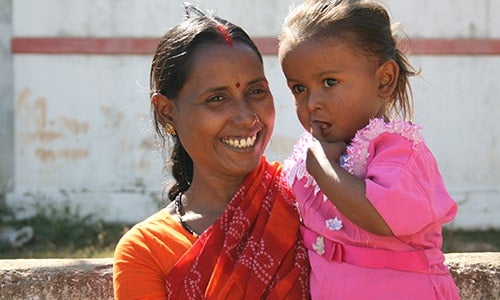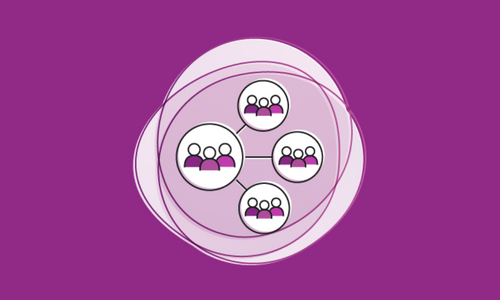Social Norms Change Beyond Direct Beneficiaries: Research and Programmatic Lessons from the Change Starts at Home Trial

The Learning Collaborative to Advance Normative Change is a network of experts committed to facilitating collaboration between organizations and individuals working on adolescent and youth norms-shifting interventions. Members are working collectively to build knowledge and tools to promote and guide effective social norm theory, measurement, and practice. To this end, we have developed a series of blogs to clarify some of the key concepts in social norms work.
As anyone who develops programs and does research on programs knows, there are the two main questions donors and the broader practice community want answered:
- Does it work, and
- Can it be scaled up to achieve value for money?
There is no denying these are important questions that should be asked, but they are also incredibly difficult to answer. This is particularly the case when thinking about changing social norms, as social norms change may take as long as one or two generations rather than the few years of a typical development grant. But how can we achieve and measure impacts—both for the initial beneficiaries and beyond—within this shorter time frame?
One approach to scaling up cost-effectively is to emphasize diffusion, designing programs to diffuse impact beyond the initial set of beneficiaries. To detect and measure this diffusion, some practitioners are using social network approaches. The Change Starts at Home trial, an evaluation of multi-component social behavior change communication (SBCC) program that aims to shift the attitudes, norms and behaviors that underpin intimate partner violence perpetration in Nepal, has a few lessons to share on this topic:
1) Know the social infrastructure of your community. This is vital to understanding how programmatic messaging will be shared, as the telling and retelling through interpersonal interactions is key to social norms change. Follow-on social network research funded by the SVRI World Bank Group Development Marketplace for Innovation on Gender-Based Violence Prevention and Response has confirmed personal and geospatially-proximate interactions can center around personal and often private experiences.
2) Quantitative measurement can also be important in diffusion-focused social norms work. Often, formative research to understand a community and the norms at play is done through qualitative work., We have found that understanding interpersonal relationships in detail, including through quantitative measurement, has provided important insights into the “who” and “how” of diffusion. In the Change Starts at Home trial, our quantitative survey found that messaging was largely being transmitted within the household, and through very close geospatial relationships, such as neighbors and friends.
3) Diffusion is an important mechanism for social norms change. Among the trial’s intervention communities, there was a clear relationship between the amount of diffusion and the amount of social norms change within those communities. This relationship existed at programmatically-relevant levels among communities with the most inequitable gender norms at the start of programming.
4) Diffusion of social norms messaging through trusted sources can be as impactful as the original message. In a recent collaborative paper focused on organized diffusion, findings from the Change Starts at Home trial highlighted an interesting finding. Direct exposure to program messaging was associated with providing support to violence survivors, regardless of the amount of diffusion within the community. However, individuals who were not directly exposed to the program’s messaging but lived in communities with a high amount of diffusion also were more likely to provide support to violence survivors. This was not true of individuals who were not exposed to messaging and did not live in communities with a high amount of diffusion.
In sum, social network assessment can be a useful tool for facilitating a richer understanding of potential diffusion networks. This includes identifying the family and community members who are involved in these networks and should be targeted for programming, those who are positive deviants for relevant behavior and beliefs, and, in socio-culturally diverse settings like Nepal, those who might act as bridges between different social networks. The Change Starts at Home team learned that measuring and deeply understanding these networks both qualitatively and quantitatively was key to seeing changes and patterns that more traditional sampling methods might have missed altogether.
If you are not yet part of the Learning Collaborative and would like to join, please sign up here!
Cari Clark, ScD, MPH, is Associate Professor of Global Health at Rollins School of Public Health at Emory University. She has nearly 20 years of experience in the field of violence research including violence prevention, screening and response, and the examination of the social drivers and health consequences of its occurrence.
Gemma Ferguson, MSc, works for Equal Access International as a Technical Adviser. She has over 14 years’ experience in radio production and social behavior change communications for development
About Change Starts at Home: The Change Starts at Home trial was an evaluation of a Social and Behavior Change Communication strategy designed to shift norms and behavior around intimate partner violence. This study was based largely on communications and social norms theories that emphasize the interconnectedness of behavior across individuals in reference groups and the embeddedness of individuals and their associated behaviors within a broader a social ecology. It was funded through DFID’s flagship What Works to Prevent Violence Against Women.
 Where We Work
Where We Work  Press Room
Press Room  FACT Project
FACT Project  Passages Project
Passages Project  Learning Collaborative
Learning Collaborative  Search All Resources
Search All Resources  Social Norms
Social Norms  Fertility Awareness Methods
Fertility Awareness Methods